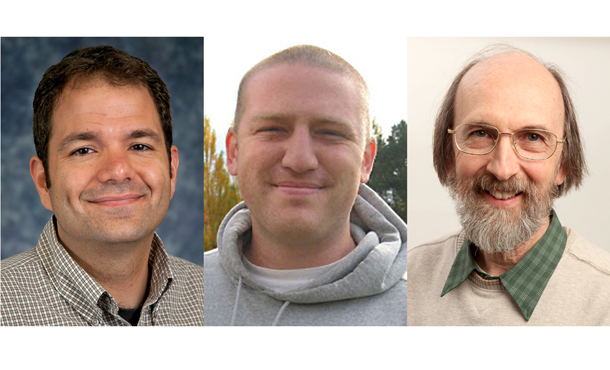Developers of a new Sunday school curriculum say it goes down a seldom-walked path — where pacifists accompany veterans toward peace.
Released on Veterans’ Day, Nov. 11, the free six-week course focuses on biblical reflections and insights about trauma with significant input from a third source.“Returning Veterans, Returning Hope: Seeking Peace Together” was created by Mennonite Central Committee and the Peace and Justice Support Network of Mennonite Church USA and Mennonite Mission Network.
Evan Knappenberger, an Iraq War veteran studying at Eastern Mennonite University in Harrisonburg, Va., spent the summer researching and writing as part of a nontraditional Ministry Inquiry Program placement.
“I did a lot of coordinating with veterans in the Mennonite world,” he said. “In almost every little Mennonite community there is one or two, if not more. There are a lot more in the Brethren in Christ church in Pennsylvania.”
The idea for the curriculum was hatched when Knappenberger crossed paths with MCC U.S. peace education coordinator Titus Peachey and PJSN coordinating minister Jason Boone at EMU’s Strategies for Trauma Awareness and Resilience (STAR) program.
The group sees the materials as a relatively new field — addressing how Christian pacifists can embrace returning warriors. For this, Knappenberger looked on his own experience.
As an intelligence analyst for the Army, he developed doubts about the military’s role and actions after joining out of high school three days after the war started in 2003. When the Army tried to “stop-loss” him for two years of active duty beyond his required time, he managed to secure a general discharge — later upgraded to honorable.
“I didn’t consider myself as a peace person until I was out for a couple months,” said the Virginia chapter president of Veterans for Peace.
New kind of analyst
Since his discharge, Knappenberger enrolled at EMU, where he is finishing his bachelor’s degree and planning to enroll at Eastern Mennonite Seminary next year. He has attended Shalom Mennonite Church in Harrisonburg for more than two years and has enjoyed getting to know the broader Mennonite church.
His experience in two worlds most people consider quite different brings a fresh perspective.
“There are a lot of potentially good things that veterans can offer churches,” he said. “There are good qualities of soldiers and veterans. Gandhi was a veteran; Tolstoy was a veteran. The people who teach us nonviolence, many of them wore a uniform.”
He said both veterans and Mennonites have stories of trauma.
“Any time you can connect the experience of trauma in a community that is focused on wholeness like the Anabaptists are, that’s helpful for both sides,” he said.
“ . . . Veterans are very mission-oriented people. That’s part of our indoctrination — mission first — and that’s also a value of at least some parts of the Mennonite world. There’s also a big focus in the military on community.”
Making community isn’t always easy. Knappenberger acknowledged fundamental differences could lead to misunderstandings and misconceptions, but that’s not a reason to avoid each other.
“I think the thing to remember is that it is going to be messy,” he said. “But I think if it’s done in the spirit of love, the messiness won’t override the intention, which is good.”
The curriculum is available at no cost online at pjsn.org or mcc.org/media/resources/1719.
Courtesy of Mennonite World Review, Dec. 15, 2014
